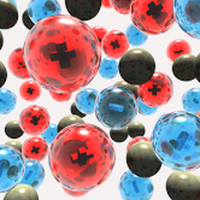Partners
 Alpha Lee Group
Alpha Lee Group
- Alpha Lee Group are a research group in the University of Cambridge. We want to combine science with statistical models to learn from big datasets. link to homepage
We use physical insights to develop models that can learn from large data sets. Our goal is to discover new materials and drugs. Our work is primarily analytical and computational, although we love interacting with experimental colleagues. Along the way, we develop new statistical techniques to make sense of scientific data.
Data-driven drug discovery and materials discovery
We are developing algorithms which will predict whether a small molecule will bind to a given receptor. Moreover, we are devising ways to search through the space of all possible compounds for drug candidates - even those never seen in nature or synthesized - and predict reactions that could synthesize them in the lab. In order to achieve this goal, we analyse why machine learning algorithms work, and come up with new algorithms, using methods in statistical physics.
Soft ionic materials for advanced electronics
We study the physics behind soft ionotronic devices such as supercapacitors, polyelectrolyte diodes and liquid electrolyte thermoelectrics. Soft ionic materials could be made non-toxic and bio-compatible, and thus is a step change compared to traditional semiconductors. Using the physical principles we derived, we are developing strategies to search through a vast material space to find optimal soft ionic materials.
Non-equilibrium strategies for complex self-assembly
Biology is full of examples of complex self-assembly. Those assembly processes are usually far from equilibrium and outside the domain of validity of classical equilibrium statistical physics. To deploy complex self-assembly in industrially relevant ways, we are developing frameworks to understand non-equilibrium phenomenologies, and a data-driven way to search through a large parameter space of assembly protocols.